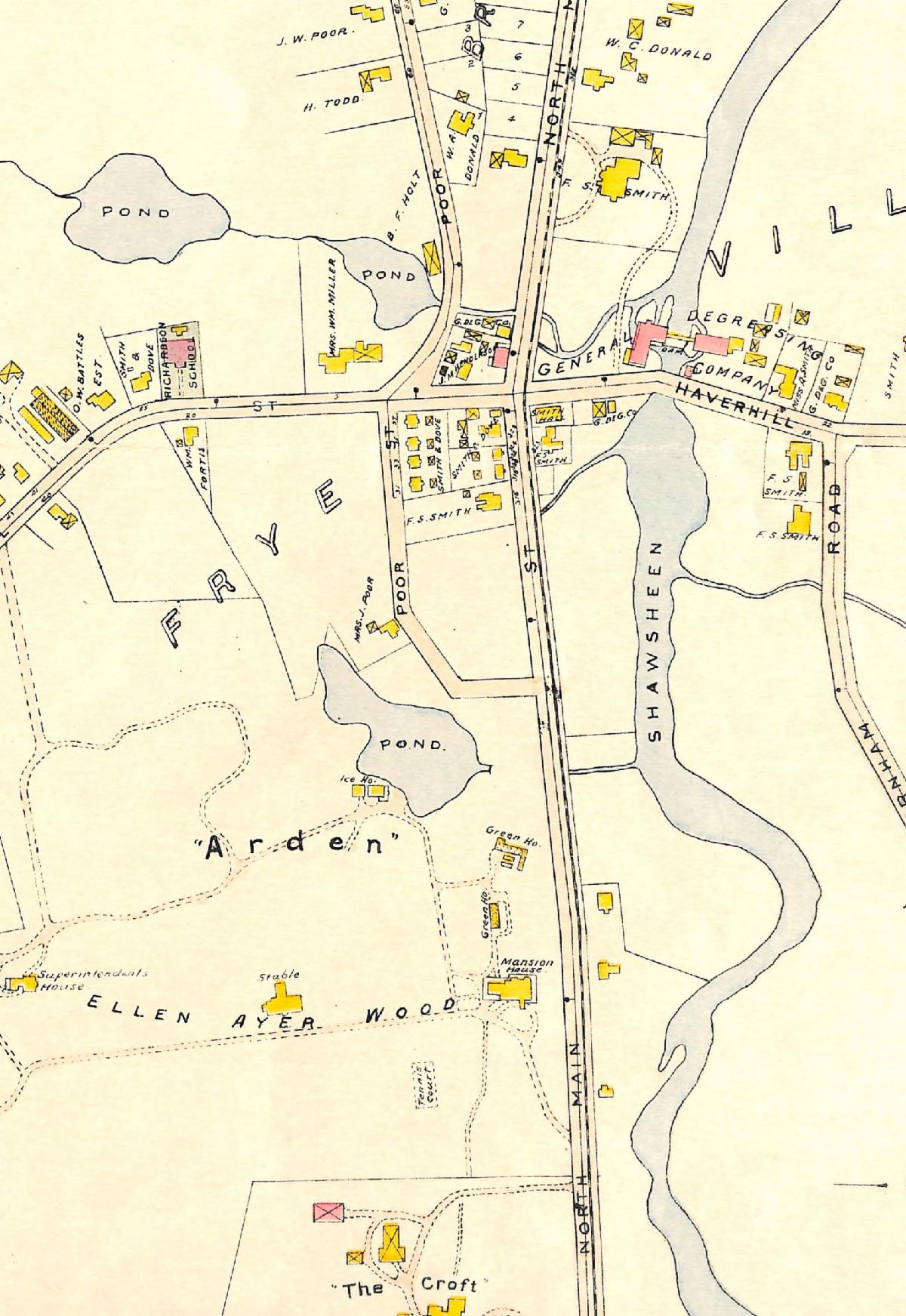Frye Village Stories: The Poor Wagon Shop under new ownership (part 3)
A Shawsheen Village 100 Story
Before Shawsheen Village Frye Village Stories: The Poor Wagon Shop
The new owners of the Poor Wagon Works, H.B.P. Tuttle and John L. Morrison, had worked together in the J.B. Jenkins & Sons carriage manufacturer in Merrimac, Mass., before leasing the wagon works property from the Poor family.
Morrison had trained as a carriage blacksmith, and Tuttle was a draughtsman. They brought considerable experience to their new venture in Andover.
The relocation of Poor Street
The original location Poor Street cut through the middle of the wagon works property with shops and buildings on both sides of the road.
Tuttle & Morrison successfully petitioned the Town Selectmen to relocate Poor Street to turn east behind their blacksmith shop and reconnect to North Main.
1906 map of Shawsheen Village
The new partners continued at this location until January 1900when they moved into a newly constructed three-story wagon works building at 44 Park Street in Andover.
More changes to the Wagon Works & Frye Village
On July 7, 1891 William M. and Ellen Wood purchased the former John Dove estate at 276 North Main Street. William began the process of improving the property into the Arden Estate we recognize today.
In 1899, having previously acquired the former William Poor homestead on the east side of North Main St. after the death of Mr. Poor in December 1898, the Woods purchased the wagon works buildings from Tuttle & Morrison,
Between October 1899 and January 1900, William Wood razed the oldest shops and moved the blacksmith building a second time in February 1900 to his estate on the other side of Poor’s Pond.
The Townsman reported each change Wood made to the Village.
Oct. 6, 1899:Wm. M. Wood has a gang of laborers at work filling and grading between the relocated Poor Street and Tuttle & Morrison’s buildings.
Oct. 27, 1899:One of the old buildings of the Poor carriage shops has been torn down.
Nov. 17, 1899:Tuttle & Morrison’s blacksmith shop has been moved back several feet to allow room for the continuation of the handsome wall which William M. Wood is constructing in front of his property.
Jan. 26, 1900:The old Poor carriage shops have been rapidly disappearing during the past week. No sooner were they vacated by the last occupants, Tuttle & Morrison, than the final work of demolishment or removal began. The old wood shop was torn down and sawed up at the same time by the circular saw located in one part...Andover’s old residents will have hard work to recognize the place in a few years with the many changes going on there as have taken place within the past few years.
Feb. 2, 1900:The last of the old Poor carriage shops has disappeared from its accustomed place on Main street and is now located across the pond.
Mar. 30, 1900:The old Poor house on North Main Street, has been demolished.
Wait...did you catch that?
While researching the Poor Wagon Shop, I came across advertisements in the Andover Townsman for a “Democrat Wagon.” What is the world, I wondered, was that?
From author Geri Walton’s website, a "Democrat Wagon" was a term to describe a square-box open wagon with two, three, or four movable seatboards on a level, and accommodating at least four, six, or eight passengers. It acquired its name because of its unassuming and democratic characteristics.
The Concord Wagon also listed in the Tuttle & Morrison ad was smaller that the Democrat, seating just two passengers.
Democrat Wagon
Concord Wagon
Like knowing the difference between a sedan and a crossover SUV today!
Next Frye Village story: the Donald Printing Ink factory










